If you love crisp, sweet, and juicy pears but live in a region with cold winters, you might think growing your own pears is out of reach. Fortunately, the Anjou pear is one of the hardiest and most adaptable pear varieties available — and with a little know-how, it can thrive beautifully in colder climates.
Known for their smooth, firm texture and subtly sweet flavor, Anjou pears (both Green and Red varieties) are excellent for fresh eating, baking, and preserving. In this complete guide, we’ll explore everything you need to know about how to grow Anjou pears in cold climates — from choosing the right site and planting to seasonal care and harvesting techniques.
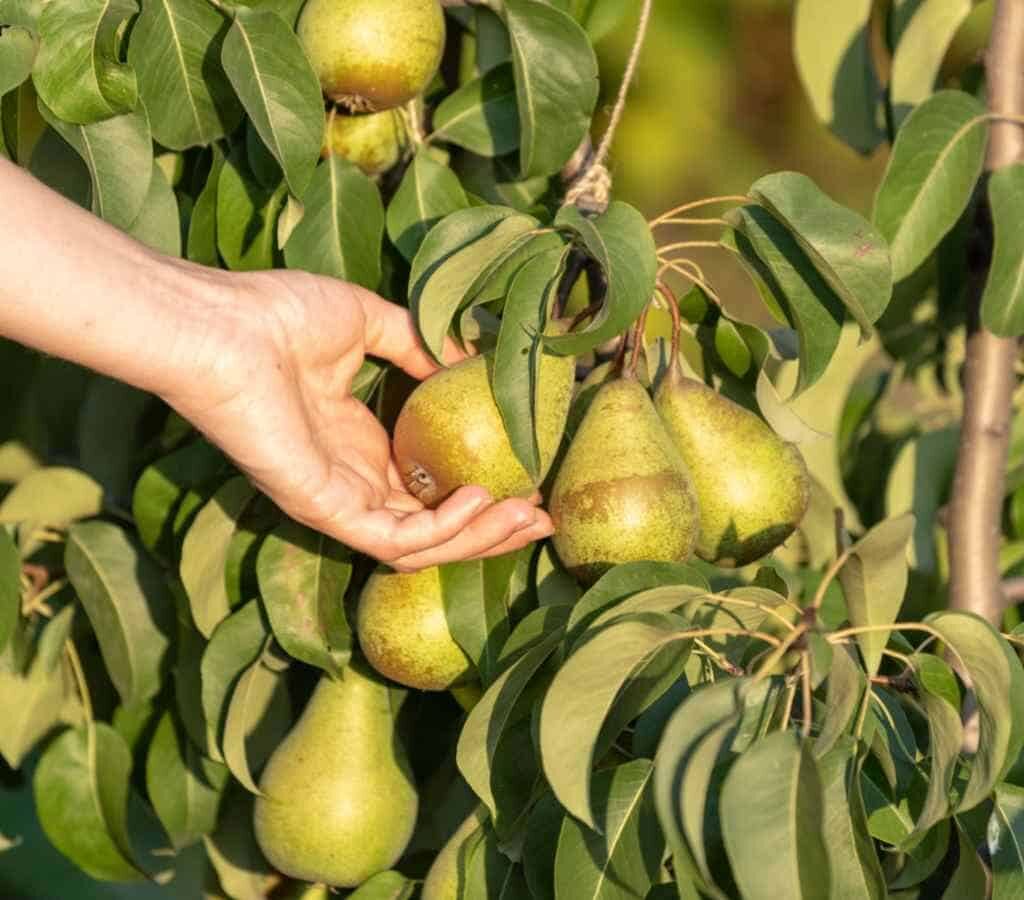
Why Choose Anjou Pears for Cold Climates?
Anjou pears are a European variety (Pyrus communis) prized for their:
- Cold Hardiness: Hardy in USDA zones 4–8, tolerating winter temperatures down to -20°F with proper care.
- Reliable Production: Late-blooming habit reduces risk of frost damage to blossoms.
- Versatility: Ideal for eating fresh, poaching, baking, or canning.
- Long Storage Life: Keeps well for months under proper refrigeration, making them a winter treat long after harvest.
Both Green Anjou and Red Anjou are equally cold-hardy and can be planted in similar conditions.
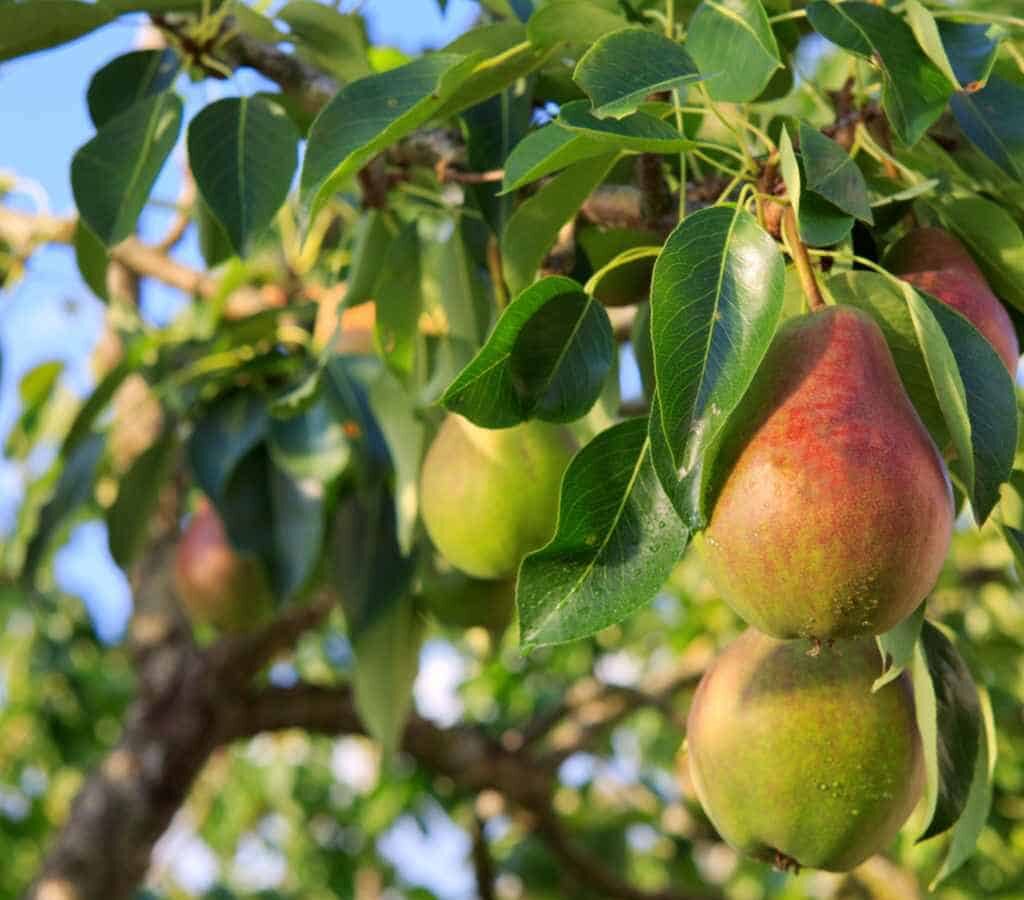
Best Location for Growing Anjou Pears
Choosing the right spot is key to successfully growing Anjou pears in cold climates. Look for:
- Full Sun Exposure: At least 6–8 hours of direct sunlight daily for maximum fruit production.
- Well-Drained Soil: Pears dislike soggy roots. Opt for loamy, slightly acidic to neutral soil (pH 6.0–7.0).
- Shelter from Harsh Winds: While hardy, young trees benefit from some protection against strong winter winds.
- Good Air Circulation: Helps prevent fungal diseases like fire blight.
Tip: Avoid planting in frost pockets (low-lying areas where cold air settles) as this can damage buds and blossoms in spring.
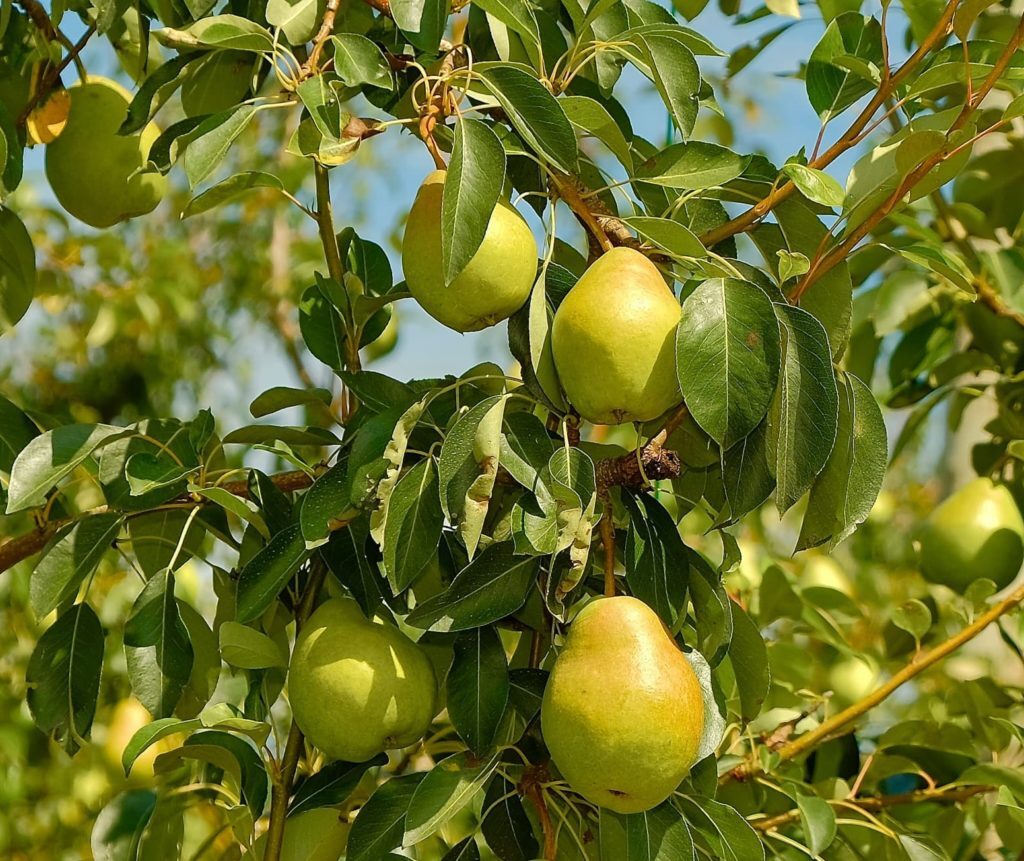
How to Plant Anjou Pear Trees
When to Plant:
- Early spring as soon as the soil is workable, or late fall after leaf drop but before the ground freezes.
Planting Instructions:
- Prepare the Hole: Dig a hole twice as wide and the same depth as the tree’s root ball.
- Amend the Soil: Mix in well-aged compost to improve soil fertility and drainage.
- Position the Tree: Place the tree so the graft union (swollen area above roots) sits 2–3 inches above soil level.
- Backfill and Water: Replace soil, firm it gently, and water thoroughly to settle roots.
- Mulch: Apply a 3–4 inch layer of mulch around the base, leaving a gap around the trunk, to insulate roots and retain moisture.
Spacing:
- Standard trees: 20–25 feet apart
- Semi-dwarf trees: 12–15 feet apart
- Dwarf varieties: 8–10 feet apart
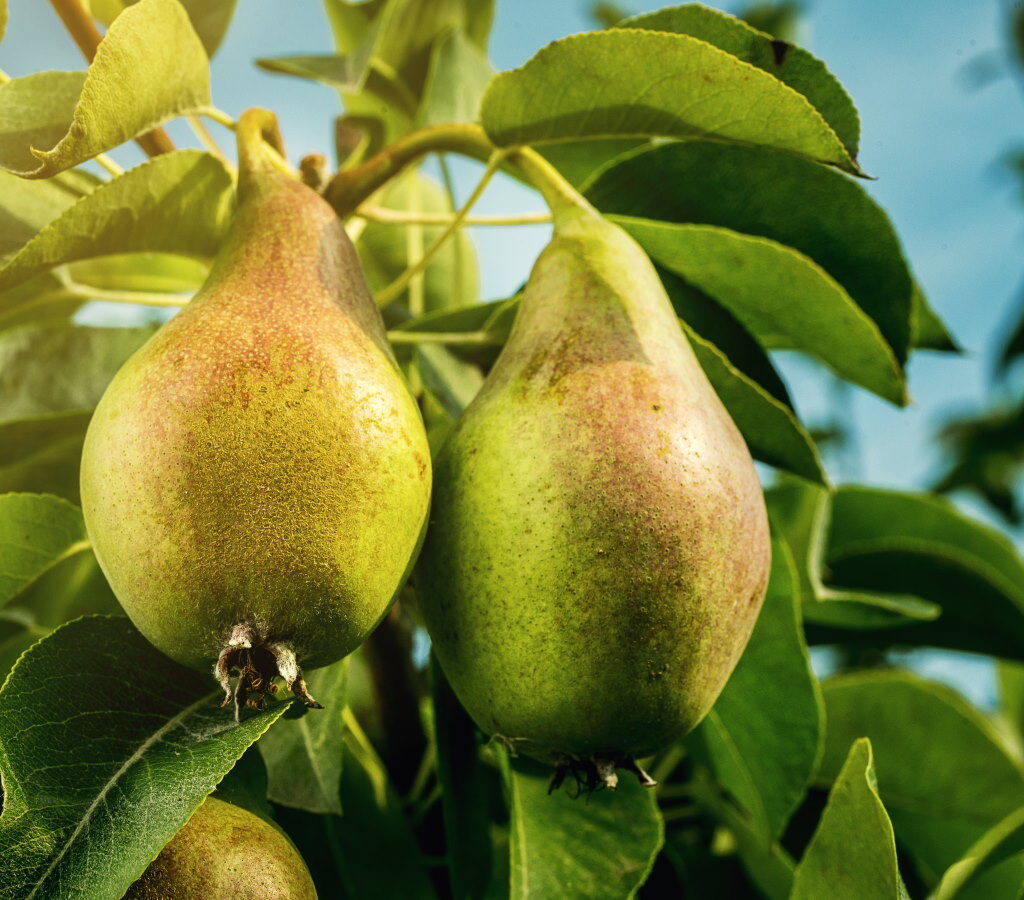
Caring for Anjou Pear Trees in Cold Climates
1. Watering
- Newly planted trees: Water deeply once a week during the growing season.
- Established trees: Need about 1 inch of water per week, more during dry spells.
Important: Reduce watering in late summer to harden off new growth before winter.
2. Fertilizing
- Apply a balanced fertilizer (10-10-10) in early spring before new growth.
- Avoid high-nitrogen fertilizers, which promote leafy growth over fruit.
3. Pruning
- Best done in late winter or early spring while the tree is dormant.
- Remove dead, damaged, or crossing branches.
- Thin crowded areas to improve air circulation and light penetration.
- Maintain a central leader structure — one main trunk with evenly spaced lateral branches.
4. Winter Protection
- Young trees may need protection from harsh winter winds and sunscald.
- Wrap trunks with tree wrap or burlap in late fall.
- Mulch generously around the root zone to insulate against freeze-thaw cycles.
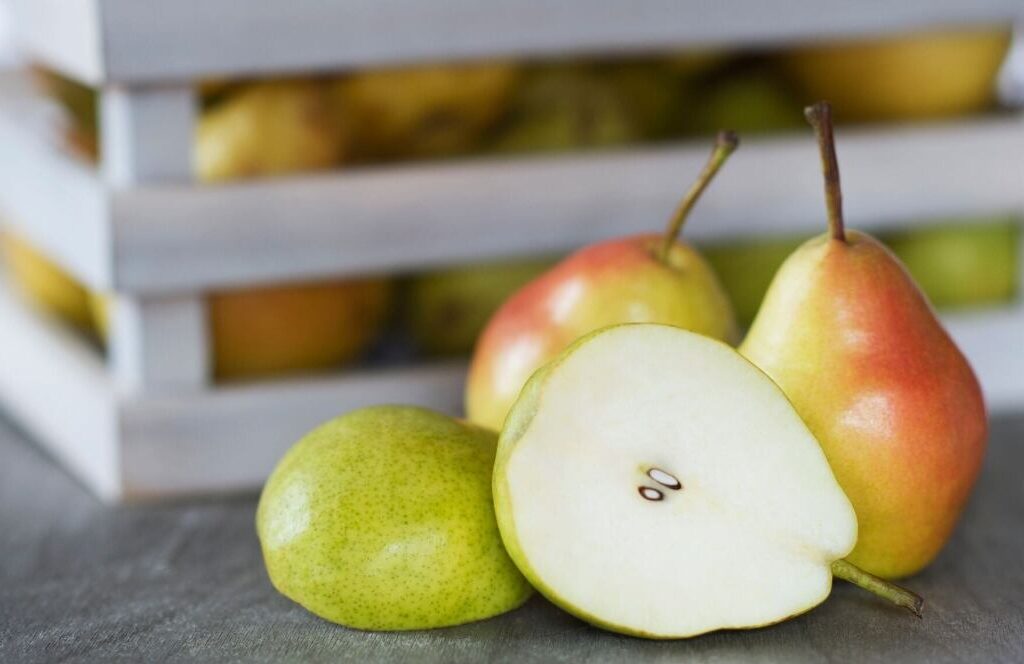
Pollination Needs
Anjou pears are partially self-fertile, meaning they can produce a modest crop alone, but yields dramatically increase with a compatible pollination partner. Consider planting:
- Bosc
- Bartlett
- Comice
Having another European pear variety nearby improves pollination and fruit set.
Tip: Ensure both trees bloom around the same time in spring for effective cross-pollination.
Common Pests and Diseases (and How to Manage Them)
Cold climates can reduce pest pressure, but Anjou pears are still susceptible to:
- Fire Blight: A bacterial disease causing blackened, wilted branches. Prune affected areas well below damage and disinfect tools between cuts.
- Pear Psylla: Tiny sap-sucking insects causing sticky honeydew and sooty mold. Use dormant oil sprays in early spring.
- Codling Moth: Larvae bore into fruit. Use pheromone traps and remove infested fruit promptly.
Encourage natural predators like ladybugs and lacewings to help control pest populations naturally.
When and How to Harvest Anjou Pears
Unlike other fruits, pears should be harvested before they ripen fully on the tree.
Signs Anjou Pears Are Ready to Pick:
- Fruit has a slight color shift (green pears develop a lighter green hue, red ones deepen in color).
- Fruit separates easily from the branch when lifted and twisted gently.
- Flesh near the stem yields slightly to pressure.
Harvest time:
- Green Anjou: Late September to October
- Red Anjou: Slightly later, typically October
Post-Harvest Ripening:
- Store harvested pears at 32–35°F to extend shelf life.
- To ripen for eating, bring pears to room temperature for several days. They’re ready when the neck yields gently to pressure.
Benefits of Growing Anjou Pears
- Cold-Hardy: Tolerates harsh winters with proper care.
- Heavy Producers: Reliable, consistent harvests with excellent storage life.
- Nutrient-Rich: Packed with fiber, vitamin C, and antioxidants.
- Ornamental Beauty: Spring blossoms attract pollinators and beautify your garden.
- Versatile Use: Perfect for fresh eating, baking, preserves, and poaching.
Creative Ways to Use Anjou Pears
Once you’re harvesting your juicy Anjous, the culinary possibilities are endless:
- Fresh: Enjoy crisp slices with cheese or tossed in salads.
- Baked: Pear tarts, crisps, and cakes.
- Poached: Gently simmer in spiced wine or syrup.
- Canned or Preserved: Make jams, chutneys, or canned pears for winter.
Pro Tip: Red Anjou pears retain their color beautifully when baked or poached, making them a stunning addition to desserts.
Final Thoughts
Growing Anjou pears in cold climates is entirely achievable with the right variety, location, and care routine. Their hardiness, resilience to late spring frosts, and generous harvests make them an excellent choice for backyard growers in northern regions.
Whether you’re starting your first fruit tree or adding to your orchard, Anjou pears promise years of sweet, crisp, and juicy rewards. With proper planting, pruning, and winter care, you can enjoy baskets of homegrown pears long after your garden has gone to sleep for the season.

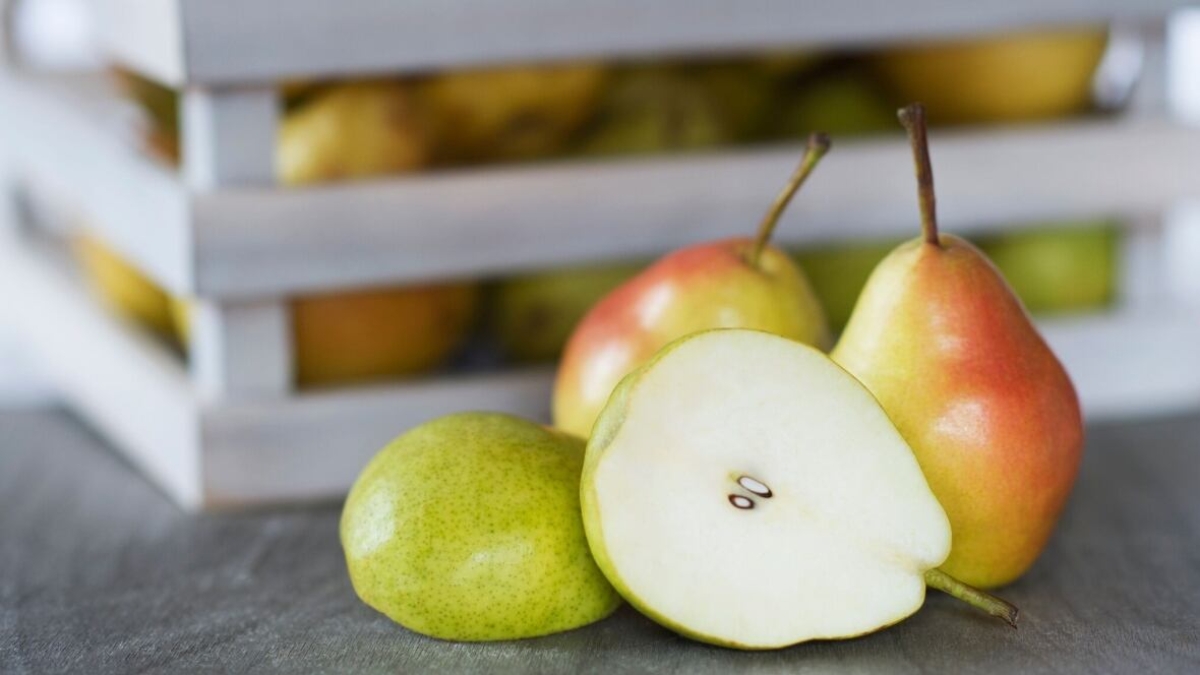




Leave A Comment